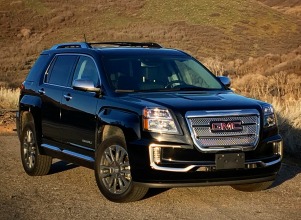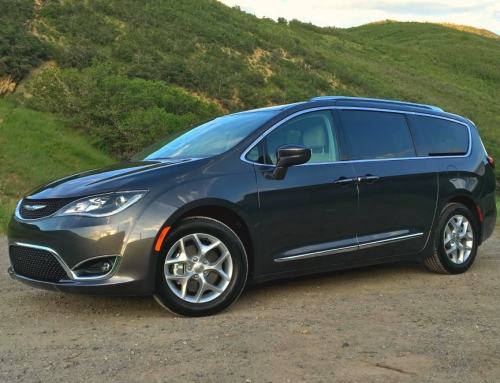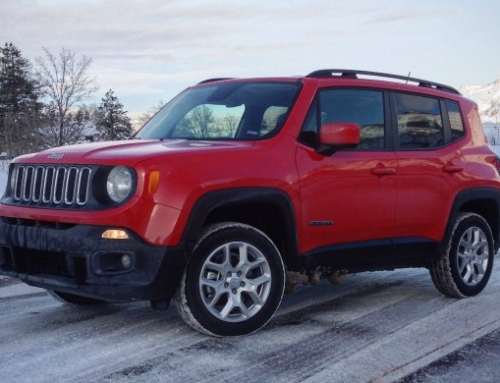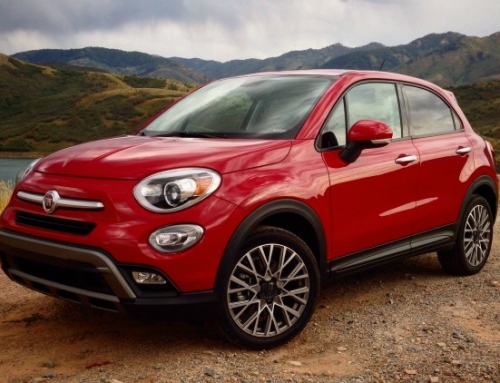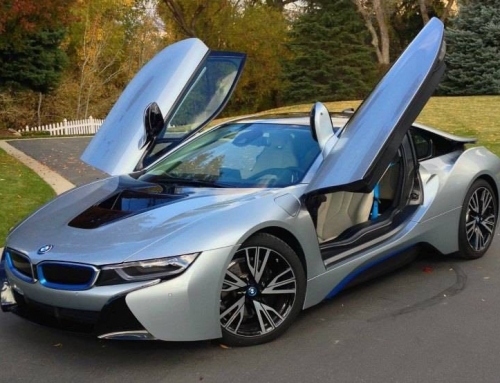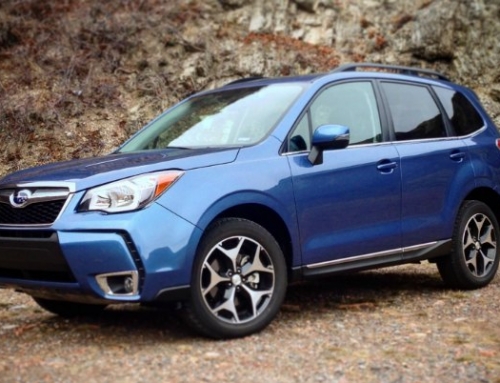GM makes two matching small SUVs: the 2016 Chevrolet Equinox and the 2016 GMC Terrain. Today we’re focusing on the Terrain.
Both seat five passengers and provide a decent ride and experience for a reasonable price. Yet the Equinox outsells the Terrain by a ratio of more than 2 to 1. Last year, the Equinox was the fifth best-selling SUV in the land (277,589 units), trailing only the Honda CR-V, Toyota RAV4, Ford Escape and Nissan Rogue. Meanwhile, the GMC Terrain sold only 112,030 units, still a respectable number, but placing it well below the Equinox.
After comparing the two vehicles, I suggest more Equinox buyers ought to consider the Terrain. Let’s explore five reasons why.
Reason #1: GMC Terrain is ready for adventure
The base 2016 Equinox starts at $23,495 while the base Terrain bumps that entry price to $24,900. The Terrain is the nicer vehicle of the two and includes additional standard features the Equinox foregoes. In terms of appearance, where the Equinox is rounded, the Terrain is boxier and appears more substantial and ready for action.
I put that action-ready design to the test on muddy, mountain roads and found the all-wheel-drive system on my tester up to the task. It pulled through mud without issue or complaint and looked like it belonged in the outdoors with a fresh coat of brown mud caking the wheels and sides of the vehicle. Yet it cleaned up nicely and looked good for a night on the town.
Since it’s far less common the Equinox, I also noticed the Terrain turned a few heads. I credit the Ebony Metallic paint job and the chrome touches. Whatever it was, the GMC Terrain looked better than I remembered and it earned positive praise from friends.
Reason #2: Two engine choices
Most Terrain models come with the standard 2.4-liter 4-cylinder engine that makes 182-horsepower. Though it works well for daily city driving, it’s a laggard on the freeway and feels underpowered when you’re trying to pass slower vehicles or merge into rapid traffic from a traffic-delayed on-ramp. This powertrain is matched to a 6-speed automatic transmission that seems nearly incapable of holding a lower gear long enough to allow you to accelerate like you might wish or expect.
GMC also offers a more powerful 3.6-liter V6 engine on higher-end trims beginning with the SLE-2 model and above. Now you’re talking about 301 horsepower and more than enough power to imbue confidence in virtually any and all driving maneuvers. If you spend much of your time climbing hills or driving in fast freeway traffic, the V6 engine is worth considering. Of course, you’ll spend an extra $1,500 to upgrade to the larger V6 engine and fuel efficiency drops in the bargain. Four-cylinder models should average 22 mpg in city driving and 32 mpg on the highway. The V6-powered models average 16 mpg city/23 highway for a disappointing 18 mpg overall, which is right where I landed following my week-long test drive.
Reason #3: Adjustable rear seats
The Terrain is a bit larger than the Honda CR-V, Toyota RAV4 and most other small SUVs. That’s immediately apparent the moment you sit in the rear seats. Unlike many small SUVs, the Terrain allows passengers to slide the seats forward and backward to, depending on your needs at the moment, expand passenger space or increase storage space.
I mentioned the feature to my daughter while asking her about rear legroom. She said, “It’s okay but some cars give me more space.” I suggested she move the seat backward, which she did, and immediately responded by saying, “So much better. I have lots of space now. I wish all cars offered that option.” She was even happier when I pointed out that she could make the seat recline, too. Take that endorsement, for what it’s worth.
Two days later I needed cargo space while traveling alone and quickly dropped the 60/40-split rear seats and had plenty of room to lay a few pairs of skis flat across the back rows. However, as good as the sliding seat feature is, overall cargo space is less than what you’ll find in many small SUVs. For instance, the GMC Terrain offers 63.7 cubic feet of space by laying the rear seats flat. By comparison, the Honda CR-V, Toyota RAV4 and Subaru Forester all feature more than 70 cubic feet.
Reason #4: The Terrain Denali model
Though the Equinox and Terrain share lots of common elements, one option that is unavailable to Chevrolet buyers is the Denali model. This is the highest-end Terrain model and offers a standard blind-spot monitoring system and rear cross-traffic alert. I demonstrated their value to some friends who joined me for dinner. I placed the car in reverse so they could view the rear camera in action and was pointing out the blind-spot monitoring system in a driveway when a car suddenly buzzed past behind us. The rear cross-traffic system alerted us to the vehicle’s presence and ensured I didn’t take my foot off the brake. They instantly understood the value of the system.
The Terrain Denali also offers new front and rear fascia, satin-chrome accents, a unique headlamp and taillamp design and unique 18- or 19-inch wheels. Plus, the unmistakable Denali grille. As you might expect, you’ll pay more for the Denali. My Terrain Denali test model started at $35,725 and topped $41,000 after 19-inch wheels, premium exhaust tips and other upgrades. Yes, it cost a lot. Yes, I liked it a lot.
Reason #5: Excellent safety and strong reliability ratings
The latest GMC Terrain earned a “Top Safety Pick” rating from the Insurance Institute for Highway Safety after it secured “Good” scores in all crash tests. The Terrain features a standard backup camera that provided a clear image of my surroundings. I suggest you upgrade to all available safety features, including the blind spot monitoring system, rear cross-traffic alert system, lane departure warning system and forward collision alert system. Why? The safer you are, the safer we all are.
Consumer Reports expects the Terrain to prove “better than average” in terms of reliability. Importantly, dependability has ranged between “very good” and “excellent” since the 2012 model year and that provides a level of confidence. JDPower.com agrees, noting that the Terrain should perform “better than most” vehicles in its class. If you do run into problems, GMC backs Terrain owners with a three-year/36,000-mile limited warranty and a five-year/60,000-mile powertrain warranty.
Better than I expected
Though I drive many small SUVs each year, I haven’t tested the Terrain in a number of years. I liked the design, the interior finish and my time driving the vehicle. In fact, I liked it much more than I expected. GM’s infotainment system lags a bit and is certainly not my favorite, but it worked well enough to allow me to quickly pair my phone to stream audio and phone calls over Bluetooth. I was not fond of the red digital display between the speedometer and odometer. The information it conveys is useful, the red color is not and I often found myself looking closely to ensure it wasn’t indicating a vehicle issue.
Overall, given the strong safety and reliability ratings, the GMC Terrain looks like a smart choice for many buyers. I’ll choose the Denali model over the Equinox.
2016 GMC Terrain photo copyright Waterdog Media, Inc.
